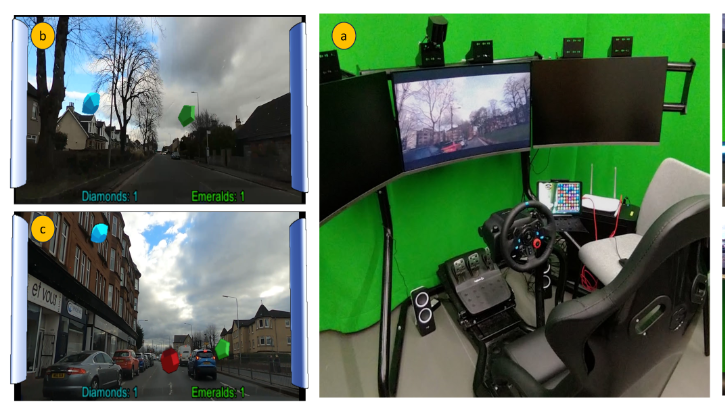As self-driving cars become more prevalent, there are concerns about passengers’ ability to relax while remaining alert to road hazards.
Researchers from the University of Glasgow in the UK have investigated the effectiveness of augmented reality (AR) technology in allowing drivers to enjoy autonomous travel while being prepared to take control if necessary.
Their study explored the use of AR heads-up displays (HUDs) to overlay attention-grabbing graphics on real-world views through car windshields. This technology aims to enable drivers to engage in non-driving tasks, such as using entertainment apps, while maintaining awareness of the road. However, the researchers say it is crucial to manage the design of these displays to avoid overwhelming users with information during critical moments.
The research findings will inform the development of safety features in future self-driving vehicles as manufacturers progress toward full autonomous control. Thomas Goodge, a co-author of the study, emphasized the transitional phase where drivers are expected to supervise their vehicles while enjoying non-driving activities.
The study involved lab experiments where participants simulated 40 driving scenarios and performed tasks using either a tablet or an AR display overlay. Tasks included tracking moving objects and copying phone numbers while being interrupted by potentially hazardous situations.

The results indicate that participants using AR displays showed increased awareness of road conditions compared with those using tablets, particularly when visual cues were provided to draw attention to developing road situations.
Professor Frank Pollick, another co-author, highlighted the importance of addressing the ‘look but fail to see’ phenomenon, where individuals fail to adequately process information in their fields of vision.
“The study shows that adding visual cues to draw drivers’ attention to situations does seem to improve their ability to quickly focus and understand situations. However, the level of demand on their attention is important – they were more able to read the road correctly in the less cognitively challenging task.”
Professor Stephen Brewster, who leads the university’s Multimodal Interaction Group, underscored the need for further research to understand how augmented reality can support users of self-driving cars.
“What this study suggests is that there may be a kind of ‘Goldilocks’ zone where people can be engaged in a task while still being kept in the loop on developing road conditions,” he said. “Much more research will be required to delve into how augmented reality can help support users of self-driving cars in the future, but we hope that the outcomes of this study will help inform the development of augmented reality systems in the years to come.”
The research, titled Can You Hazard a Guess? Evaluating the Effects of Augmented Reality Cues on Driver Hazard Prediction, will be presented at the Association of Computing Machinery CHI conference on Human Factors in Computing Systems, which takes place on May 11-16 in Hawaii.
Funding for the study was provided by the European Research Council and the UKRI Centre for Doctoral Training in Socially Intelligent Artificial Agents.


